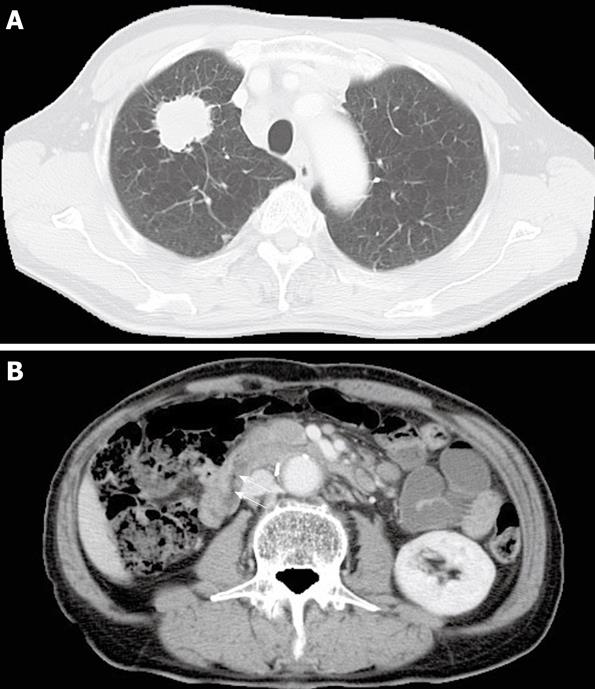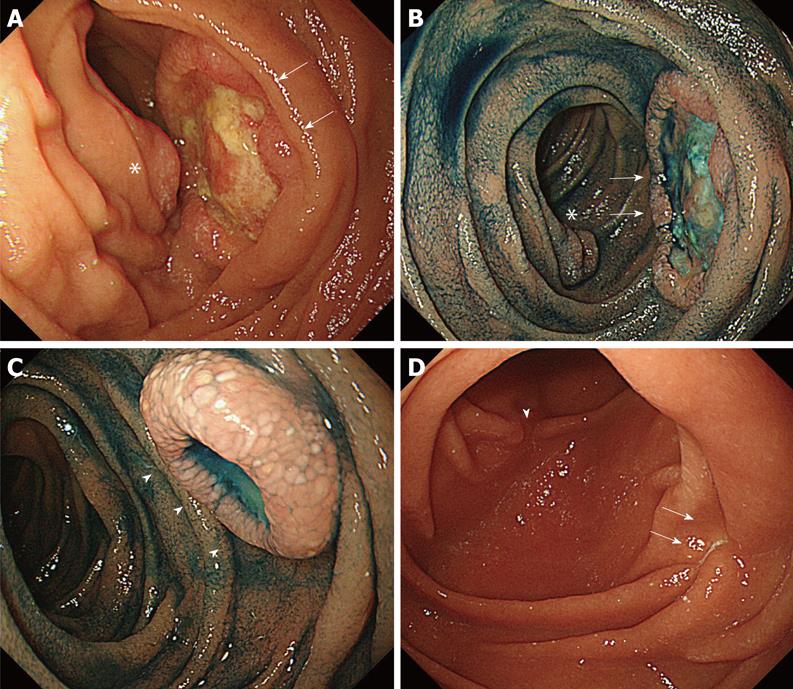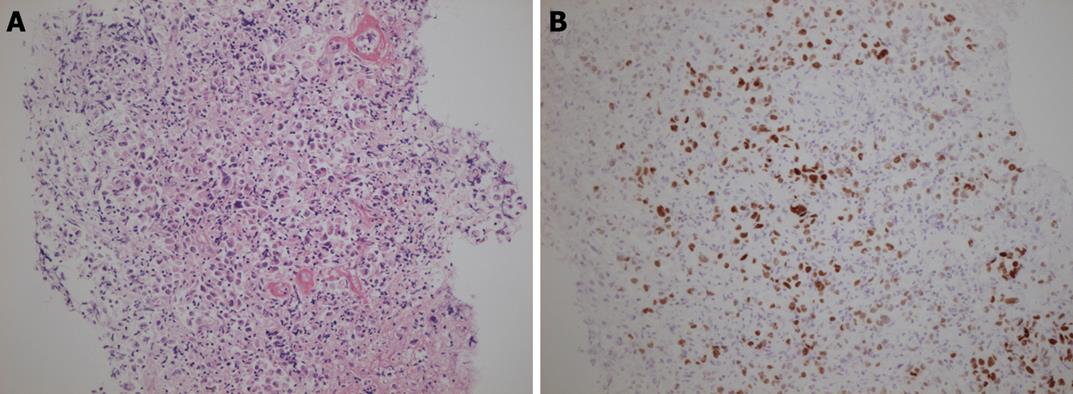Copyright
©2010 Baishideng Publishing Group Co.
World J Gastrointest Oncol. Sep 15, 2010; 2(9): 360-363
Published online Sep 15, 2010. doi: 10.4251/wjgo.v2.i9.360
Published online Sep 15, 2010. doi: 10.4251/wjgo.v2.i9.360
Figure 1 Chest computed tomography images of primary lung adenocarcinoma (A) and abdominal computed tomography images before gemcitabine (B).
A: Chest computed tomography before chemotherapy revealed a tumor of 2.5 cm in diameter with spike-like projections; B: Walls of the duodenum become thickened at the second portion (arrows).
Figure 2 Esophagogastroduodenoscopy images of duodenal tumors.
A: There are two tumors at the second portion of the duodenum. Largest one (arrow) shows broadly elevated ulceration with central protrusion. Another tumor is located at the opposite side of the largest one (asterisk); B: After indigo carmine dye, ulcer base reveals a non-structural mucosal pattern with white coats. The edge of the tumor appears to be covered by normal-looking mucosa. Another tumor is located at the opposite side of the largest one (asterisk); C: Smallest one (arrowhead) is located at the most anal side. All three tumors have common features of a so-called submucosal tumor; D: After three courses of gemcitabine, three tumors at the second portion of the duodenum disappeared and are only discernible as scars in esophagogastroduodenoscopy (EGD). The scar that is derived from largest one (arrows) and another derived from the tumor located at the opposite side of the largest one (arrowheads) are discernible. The scar that is derived from the smallest is hard to see in this view of EGD.
Figure 3 Histological findings of biopsied specimen.
A: High degree of cellular atypia, elevated nucleus/cytoplasm ratio and anisonucleosis at hematoxylin and eosin stain all reveal the presence of poorly differentiated adenocarcinoma in a biopsied specimen, × 100. B: Tumor cells were positive for thyroid transcription factor-1. Avidin-biotin-peroxidase stain, × 100.
- Citation: Miura T, Shimaoka Y, Nakamura J, Yamada S, Miura T, Yanagi M, Sato K, Usuda H, Emura I, Takahashi T. TTF-1 is useful for primary site determination in duodenal metastasis. World J Gastrointest Oncol 2010; 2(9): 360-363
- URL: https://www.wjgnet.com/1948-5204/full/v2/i9/360.htm
- DOI: https://dx.doi.org/10.4251/wjgo.v2.i9.360











